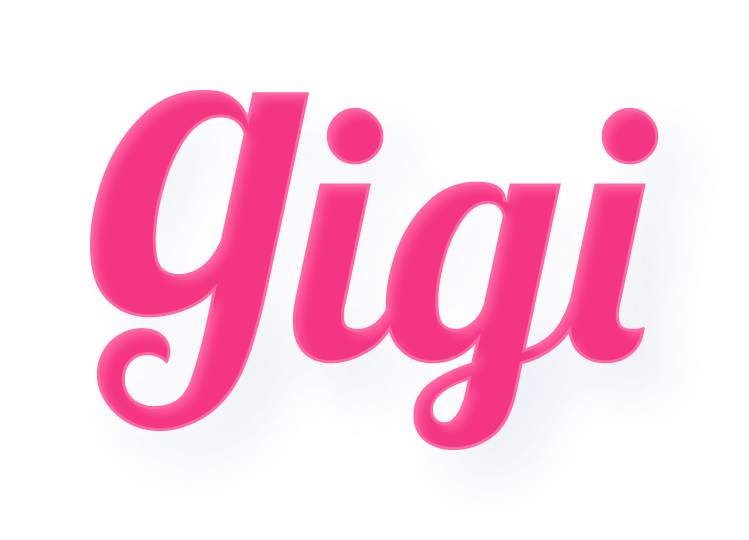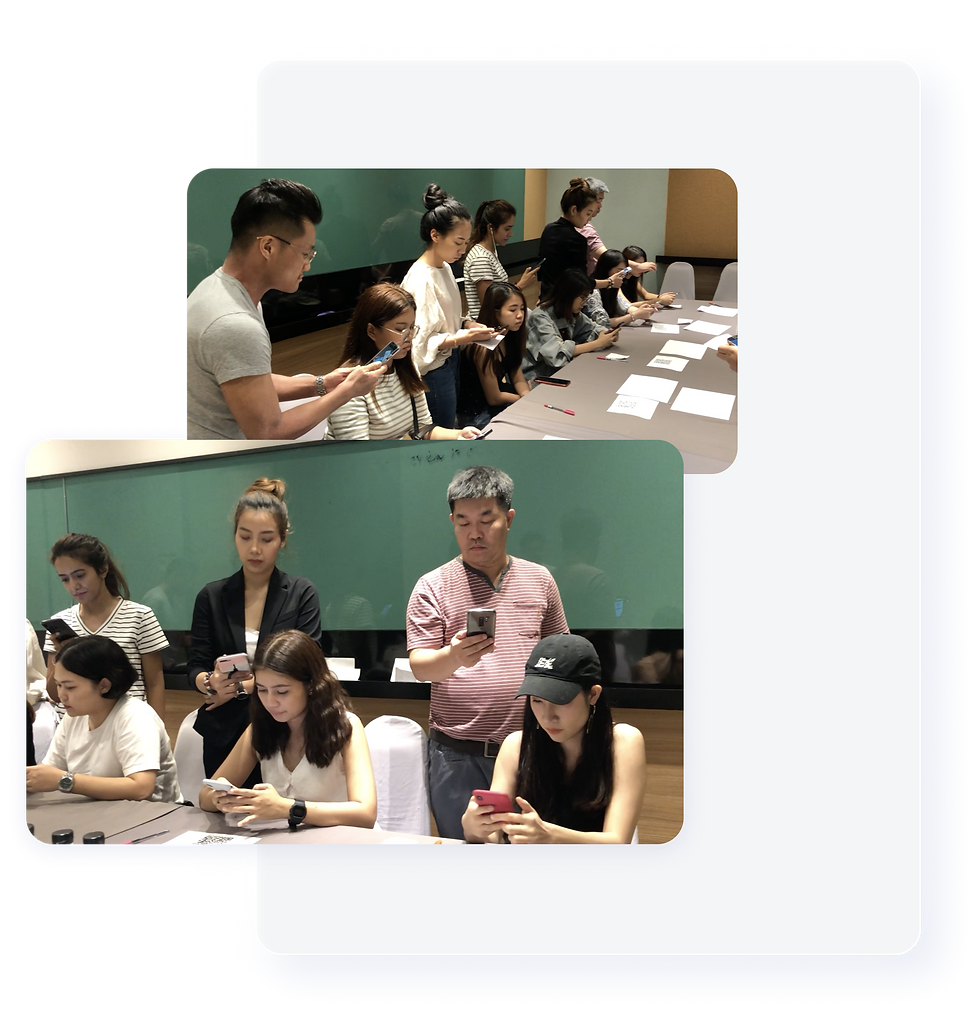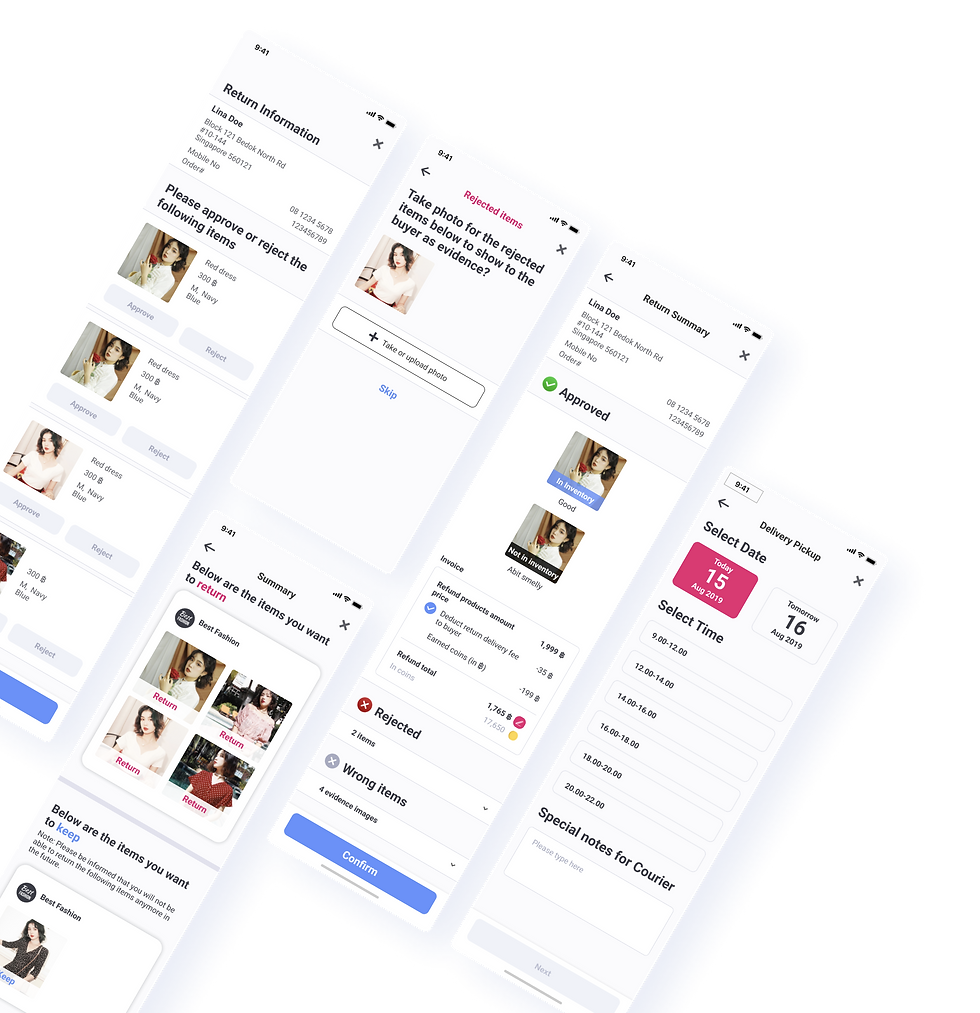Gigi
A fashion adventure
Launch a Fashion Commerce App and Payment Solution in Thailand.

Introduction

Thailand, Land of smiles
If you've visited the Siam or Chatuchak areas in Bangkok, you'll notice numerous fashion outlets offering self-made products.
Many of these business owners have taken their products online, using Instagram and Facebook to reach large audiences and facilitate easy purchases. However, these platforms currently lack integrated payment and checkout functions.
Our team's goal is to bring these businesses onto our platform, helping them build their brands while providing a seamless purchase experience complete with loyalty and rewards systems.

Market research
Fashion, global billion dollar industry
The challenge with these platforms is that they allow a wide range of general products, not exclusively catering to fashion business owners.
With Thailand's fashion apparel market projected to reach US$621 million in 2020, we aim to create a specialized platform where fashion business owners can aggregate, allowing us to capture a share of this growing market.


Design thinking process

Design system and brand
Pink is the favorite color for many women.
Pink will be used for CTA buttons to highlight key aspects throughout the process. The rest of the UI will feature black and white to ensure the product content remains the focus of the app.



My role
Every product starts from a great team
Our team is composed of 1 Backend Developer, 2 DevOps Engineers, 3 Frontend Developers, a Product Owner, 6 User Testers, and myself—the sole designer responsible for all aspects of design and media, including the website, app, branding, and marketing.
-
I engage in intense collaboration with the Product Owner to shape the overall product flow and direction, ensuring usability through user testing and analyzing Amplitude data.
-
I work closely with the Frontend team to address technical challenges, and once resolved, we involve the Backend team for further discussion.
-
I maintain constant communication with testers and the business team to gather feedback and plan the next round of user tests.


Empathy
First user interview
Before starting the project, we need to understand users' habits and behaviors when making fashion purchases and identify their pain points.
Here’s how most of them approach it:
01
Go to the brand Instagram’s page and screenshot the product they are going to buy.
02
Send it to the admin via IG Chat or LINE Chat, where they request for payment method. Payment is by QR Code or bank transfer.
03
Once payment is confirmed, admin will request for customer’s address and the process is completed.

Define
Chief complains
& Problems
These are the chief complaints we found out from the purchase behavior
01
Time taken to complete purchase is too long as there maybe miscommunications or delay
02
Admin maybe busy or asleep when customer is showing interest via chat
03
Accounting or stock keeping wise maybe a hassle as records are manual
04
Tracking of products is via a different channel. Back and forth navigation of different apps.

Target audience
18 - 35 Years old female
For this project, our primary target audience is fashion and tech-savvy females aged 18 to 35, from teenagers to working adults.

Ideate
First iteration
What if we created an app very similar to Instagram (the app users are most comfortable with) but with an added checkout function?
The feedback was far from satisfactory. Most users responded:
-
'It looks too much like Instagram. I'd rather use IG since that's where my friends are.'
-
'I don’t mind sticking with the old process, even if it’s more troublesome.'
Merchants also expressed concerns:
-
'I already have a large following on Instagram. Why should I use a new app and start over?

Visual design
Familiarity
While gathering initial feedback, we also need to prepare mobile app concepts, as this will be part of phase 2 of our plan.
As mentioned, our goal is to create a UX/UI familiar to our target audience, which is why we are heavily inspired by Instagram’s design language for both the merchant and consumer apps.
This includes the UI/UX experience, color scheme, and layout, ensuring that admins, business owners, and users can navigate the app with minimal friction through all basic functions.
We are mindful to add or adjust certain design elements to better align with our product direction.

User validation: Merchants
Mutual benefits
Given that business owners already have a base of regular customers, our strategy is to onboard both them and their customers.
We approached three merchants with a solid customer base and offered them a lightweight merchant app. This app allows them to upload products, manage stock (SKU), download reports, adjust the loyalty system, and view daily orders.
The feedback from these owners was positive; they found the onboarding flow and product uploading process straightforward.
Additionally, as it's a simple mobile app, even admins with minimal tech knowledge can easily use it.

User stickiness and churn
Iterate, iterate, iterate
All design decisions were made after several iterations and discussions with the team, followed by final approval from the Product Owner.
Our focus is on retaining users and increasing conversion rates to remain competitive in the challenging e-commerce landscape.
For example, on the homepage, we considered whether to A/B test user focus on referrals or to prioritize the products themselves.

Value Proposition: Merchants
Accounting & SKU Management
Using bottom navigation, we enabled owners to check their orders, upload products, monitor posted items, and download various reports.
In the merchant app’s UI, most CTAs are in blue to differentiate it from the consumer app.

IA: Home, Checking order status > Returns services (WIP) > Simple uploading of products > View uploaded products > Download reports

Other screens from merchant app, onboarding, profile management, order history, uploaded item page, etc
User retention
Rewards & Loyalty System
To provide additional value to merchants, we also offer a carefully designed rewards, membership, and referral system. This ensures their customers will return and recommend the app to their friends.

Conclusion
It has been fun!
The project has not been publicly announced yet, as stakeholders feel it still needs polishing and additional value-added features. Currently, any business owners who onboard with us receive a free Facebook marketing budget.
Among our top merchants, sales have increased by 40% compared to their previous selling methods. As of April 2020, we've onboarded 30+ merchants and reached 40K end users.
Although it's been developing close to 1.5 years, we have missed our original public launch deadline of February 2020, where we aimed to onboard at least 100 merchants.
Given the tight timeline for implementing many features, I wish I had more control and could plan better by releasing them in phases in closer collaboration with the Product Owner.
The product has a lot of potential, with many areas for improvement, including product content, user interaction, proper design system or processes and consistency in the UI/UX.
Being exposed to a new culture, learning from and working with a diverse team, facing challenges, and witnessing the app's evolution from the beginning has been a truly eye-opening experience.



Phase 2: End users
Fashion commerce app
With three merchants onboard, we finalized the Consumer app and prepared the MVP for launch.
During previous tests, we adjusted the flow so that users would download the app instead of completing purchases through a web link.
At this stage, we also introduced features such as order tracking, add to cart, credit card checkout, and cash on delivery (COD) by partnering with local banks.
Within just over a month, we gained 5,000+ users and saw a 40% increase in sales from the three merchants alone.


User conversion, transaction flow. At this time we are also trying to figure out address management to better simplify delivery input.

Other screens from the end user app like, referral, order management, profile and Wishlist, etc.
Value proposition: End User
Kickstart with payment and tracking
Considering the initial feedback from consumers and merchants, we realize that it may take a long time to get users to adopt another app, especially with giants like Instagram in the market.
Given our small team, tight timeline, and limited funding, we need to build a lightweight solution.
To avoid delays, we decided to start by developing a web-based payment solution prototype, allowing users to purchase and checkout via QR code, linking them out of Instagram to complete the payment process. We will begin usability testing with this prototype, and the insights gained will be valuable for phase 2 of the project.

User validation: End Users
Feedback time
With the web checkout implemented, we conducted usability tests with around 50 consumers over several rounds.
Participants were given specific instructions, primarily focused on completing the purchase flow and verifying the functionality of the generated QR code.
Throughout the testing process, we continuously observed and refined the purchase flow, making improvements as needed before finalizing the app development.
Ultimately, 70% of users completed the purchase with little to no difficulty, marking a successful usability test.

User acquisition strategy
Leverage
Our founder also owns a last-mile delivery company in Thailand, giving us access to data on merchants with high delivery volumes. We plan to reach out to these merchants through our sales team.
Our milestones are as follows:
-
Provide a payment and rewards solution for select merchants and execute it effectively.
-
Launch and refine the app for purchase and tracking.
-
Onboard additional merchants with 50k+ followers on Instagram or Facebook.
-
Expand to offline fashion outlets, targeting at least 100 merchants in the next 6 months.
-
Onboard their loyal customer base, collect data, and continuously improve.
-
Open the app to the public, enabling features like shop follow/unfollow to kickstart the Discover and Search functions.
-
Introduce curation and recommendations for similar fashion brands, returns management, and social elements like reviews.

Challenges
Reinventing the wheel
The product does not follow the typical e-commerce app model where users simply download the app and search for what they want.
-
Users can only access shops via IG or LINE channel web links, which then deep linked into the app to appear (as "followed") in the app. If a user downloads the app directly from the App Store, it will initially appear empty, which can cause confusion. (This is a workaround approach.)
-
Frequent changes during the design process, influenced by team contributions, have impacted the delivery timeline. Some designs have deviated from the original product direction.

Challenges
Language barrier
Frequent changes in business decisions have caused significant delays in execution. For example, the decision to include exclusive partnerships with a logistics company to provide delivery and return services has impacted timelines.
-
This is my first time working in Thailand, and there has been a lot of back-and-forth due to the need for translation with each new flow implemented. Effective communication is crucial, so learning basic Thai has become necessary.
-
Fortunately, the Thai team is hardworking, and the testers have been very helpful, allowing us to gather enough feedback to push development forward without major difficulties.
